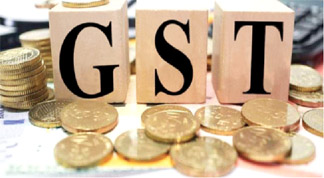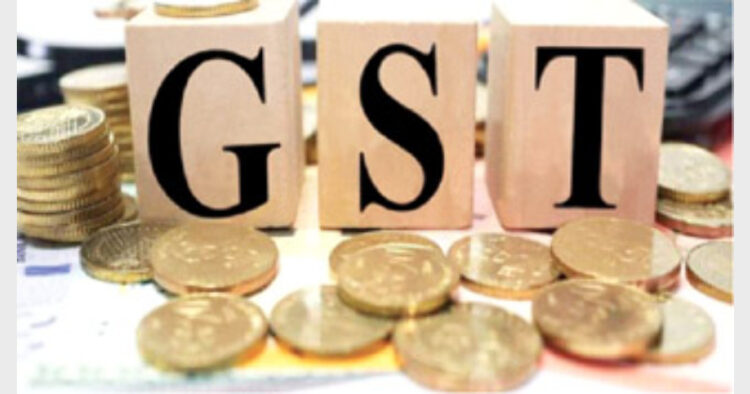 The reform in the tax structure is expected to benefit both, the producers as well as the consumers and streamline the national economy in the long run
The reform in the tax structure is expected to benefit both, the producers as well as the consumers and streamline the national economy in the long run
Dr Meenal Sharma Jagtap
We are today standing at the cusp of a big change as we await the biggest fiscal reform of federal India with a bated breath. In a major departure from the present system, once the GST becomes operational, the divide between Centre and States of India will merge and India will emerge as a single unified market.
The GST, which is now appearing to be a big challenge may prove to be a big opportunity in disguise if the stakeholders view it as a positive reform and make relevant preparations to face the challenges and opportunities that it throws up.
On the contrary, the advent of GST has generated a lot of fear. The lack of information and understanding of it has a role to play in this viewing of the event with uncertainty which may be overwhelmingly difficult to deal with.
If we trace the history of it, the discussion on GST first started in the year 2000 and the GST bill was conceived around 14 years ago. As it is a constitutional amendment, it was required to be passed by both the houses of Parliament with a 2/3rd majority and needed ratification by States. GST was supposed to be implemented initially on April 1, 2010 but the deadline was extended twice to April 1, 2016 and then April 1, 2017. It is now set at July 1, 2017. The government wants to stick to the deadline this time as they want to put it, in testing waters for at least one quarter of the year.
The reform in the tax structure would be beneficial to both the producers as well as the consumers. For producers it would lead to simplicity in tax rules, rates and procedures and bring in more transparency through digitisation of payment systems etc. For consumers, the good news would be reduction in prices of some goods and services. It would lead to improved tax compliance and thus improved tax collection.
The concept of GST is based on taxing goods at supply points and a destination-based taxation system. Also, the concept of matching credits being implemented by GST network will aim at ensuring seamless flow of credit in the chain of value addition in goods from manufacture to consumer. This reform will increase revenue for the government as it will do away with tax evasion through false representation by businesses, which would not be possible now. The government also aims at attacking the problem of ‘anti-profiteering’. The anti-profiteering simply means not passing the benefit of reduction in tax rate borne by businessmen to the consumers. A government-constituted body will monitor prices after GST’s implementation. A reduction in prices is definitely expected for the consumers.
It seems that all reformatory steps taken by the government in the past years have been well- thought out and planned. Demonetisation before GST has been a clever move as it increased the penetration of digitisation in mode of payments as well as increased consumer awareness on the benefits of using digital modes of payments.
The rate slabs of GST has also been scientifically determined after due deliberation on issues concerning each sector.
After initial teething problems, in general, the GST will be beneficial for retail sector as well. Most importantly, the businessmen will gain more autonomy in their business decisions as they would now be able to take decisions based on operational efficiency rather than on trying to reduce their tax liability across the states. Thus, the flawless credit chain would add to retailer’s advantage.
One of the problems associated with transitional credit system in GST is the ‘time lag’ in receiving credit for GST paid on every debit in the account. The traders and retailers can file declarations claiming a tax credit for transition stock within 90 days. This will impact small businesses adversely as it will reduce available liquidity. Another issue which is likely to bother retailers is the non- clarity on the provisions concerning e-way bill. An e-way bill will have to be generated by online registration of a consignment of goods (worth Rs 50,000 or more) that need to be moved from one place to another. This bill can be checked by officials at any time to ensure that taxes have been paid and it will ensure effortless transportation throughout India. Since these bills need to be generated in real time, it is essential that companies have IT infrastructure suitable to generate and support e-way bills. Also, some of the provisions concerning these bills seem to be unrealistic and difficult to adhere to. To cite an example, a new e-way bill would need to be generated if the mode of transport of the consignment is changed. This would make life difficult for all e-commerce companies which frequently change the mode of transport mid – way.
Another interesting feature is the GST compliance ratings mechanism which has been put in place by a particular section in the Law. So all the vendors registered under GST will be given a GST compliance rating. This would also play a part in increasing or decreasing the brand value of the company.
If Indian government gets the support of all the stakeholders, as is seeming to be the case now, in less than 25 days, we would witness one of the biggest reforms in Indian economy. All in all, it is
expected to bring about positive changes in the economy and bring cheer to
everyone, particularly the retail sector and consumers.
(The writer is Associate Professor, Amity School of Economics)
|
What is GST ? Goods and Services Tax (GST) is an indirect tax throughout India to replace taxes levied by the Central and State Governments. It will subsume various indirect taxes including central excise duty, services tax, additional customs duty, surcharges, state-level value added tax and Octroi. |
|
“When you go in for reforms, you must never blink. If you blink, you get derailed” India’s biggest tax reform since Independence, the national Goods and Services Tax or GST, will be launched at midnight on June 30. President Pranab Mukherjee, Prime Minister Narendra Modi and former Prime Ministers, Dr Manmohan Singh and HS Deve Gowda, will be on stage in the Central Hall of Parliament for the launch. PM Modi will deliver a speech at the special gathering of the Parliamentarians. All the Chief Ministers will also be invited for the inauguration. |














Comments